Economy
J&K’s simmering unemployment
Published
3 years agoon
By
BK Editor
Exacerbated due to the ongoing COVID19 pandemic, unemployment is an ongoing issue in J&K. Meer Nida and Salman Jeelani analyse the causes and consequences of J&K’s simmering unemployment problem.
The COVID19 pandemic has already been through multiple waves globally, and there seems no hope of any light at the end of this dark tunnel anytime sooner. The economic recession due to COVID19 and its subsequent consequences, like loss of livelihoods and rising unemployment, have already affected the mental health of people. Besides, there is uncertainty looming around the globe. However, the problem in the Union Territory of Jammu and Kashmir is more severe considering the prevalent consequences of the pandemic, added with the unattended issues of unemployment in the valley for a very long time. A recent report from the Centre for Monitoring Indian Economy (CMIE) indicates that Jammu and Kashmir has an unemployment rate of 22.2 percent, the highest among all the states and union territories of the country. It is more perturbing to state that the unemployment rate of J&K is much higher than the average national unemployment rate of India, which was at 7.1 percent as per the report.


The soaring unemployment in Kashmir is a serious concern. The pandemic, along with ongoing uncertainty, has severely damaged the prospect of a stable economy. And the rising unemployment puts the final nail in the coffin of economic stability. The job markets have been pushed to the edge, both in the public and private sector, with no fresh opportunities visible. As the valley doesn’t have a vibrant private sector in place, the burden of employment ultimately falls on the public sector, which, unfortunately, it is unable to tackle as the absorption rate is low.
The government and its various departments do not seem, at all, serious about these rising figures. There are not enough or even requisite posts advertised in the government departments, and even, if advertised, they are never worked out effectively – lack of proper schedules and criteria, relapsing of the advertisements as per their whims, corruption, backdoor entries, favouritism etc. are the main loopholes. There seems to be no proper policy in place in the institutions, which is highly detrimental considering the unemployment issue in the valley. Last year, when the Directorate of Employment created a portal for registering unemployed persons, it is disheartening to mention that around three lakh research scholars and postgraduate degree holders enrolled on the website within a few days. Even when the Jammu and Kashmir Service Selection Board (JKSSB) advertised around 8,000 Class-IV posts, more than five lakh aspirants applied for the same. However, it underwent a controversy considering that the aspirants with higher qualifications were not considered for the posts. The burgeoning figure is an indication enough about how sorry the state of affairs concerning employment is in the valley. And then there is this looming question – Where do the ones with higher education go? The low demand and absorption rate is so alarming that people with higher qualifications and professional degrees, in order to support themselves and their families, have to set for menial jobs and meagre salaries. Especially in the minuscule private sector available in the valley, this often results in their exploitation.
Even in the government sector many people work on a daily wage or contractual basis. And the government is head over heels in deep slumber and pays no attention to the demand for regularisation of their services. The government disengaged a number of contractual lecturers in the Education Department from their services, despite having served various institutions for several years together. Now, in their late thirties and about to cross the upper age limit, they are jobless and have nowhere to go except raise their demands for regularisation. Many daily-wage workers in other departments, like Urban Local Bodies, Social Welfare Department, are hoping against the hope for the regularisation of jobs. It is a vivid example of how the government itself became the root cause for the apathy of these youth who are victims of its ‘use and throw’ policy and have to fend for themselves amidst the already prevalent uncertainty.
While the apathetic attitude of the Education Department was in the news for a long time, the government rarely bothered to care. It contends that its policy of absorption of Rehbar-e-Taleem (ReT) and Sarva Shiksha Abhiyan (SSA) teachers leaves no vacancies for fresh recruitments in the teaching department and is likely to continue for upcoming many years. However, this contention is a root issue itself. The teacher-student ratio in many schools and colleges is highly disproportionate. There are many examples where there are too many teachers for very few students and vice-versa, leaving minimum chances for the highly educated youth to render their services as skilled and learned teachers in the Education Department. Often, government schools in the valley show poor results, and there are complaints about inefficient staff and teaching-learning scenarios. Besides, colleges and universities not advertising various teaching posts regularly also become a hindrance for the livelihood of educated youth. One of the reasons behind this is the extension of services of staff members beyond superannuation or enhancing the retirement age from time to time. This tendency heavily weighs over the employment opportunities for many deserving candidates who are highly learned and skilled. Plus, the system of backdoor entries and nepotism has favoured people who, with an approach to government corridors, secure jobs for themselves, thereby rendering many deserving candidates jobless.
Also, every year, thousands of students pass with professional degrees. The moment they get the degree, it is disheartening to mention that they end up shifting their courses according to the job availability around the state. It, in turn, leads to doctors working as administrative officers, engineers working in banks, students of commerce working in a sector where Liberal Arts and Humanities students could have got absorbed. It has led to the dilution of professional skills and talent. But is the youth to be blamed for this intermingling of professions? The answer is a clear-cut NO. When there are no decent job opportunities available, how will the youth fend for themselves in a society which provides them literally no ‘proper’ avenue to exercise their skills?


With the introduction of the All India Quota (AIQ) for securing admissions in prestigious medical colleges of the valley — though deferred for implementation from the next academic year — the students from Jammu and Kashmir will have to compete for securing admissions in prestigious medical colleges of the UT with students across the country. The state quota has five hundred seats for post-graduation in the medical field. Around 3,000 students used to compete for them within the valley itself. With the implementation of AIQ, 50 percent quota from each of the Government Medical Colleges shall be granted to the national pool, and for prestigious deemed institutions like Sher-e-Kashmir Institute of Medical Science (SKIMS), a perfect hundred percent will go to the all-India quota. The work bond of the candidates who get selected outside J&K will be around 8 to 10 years, which if one fails to fulfil could end in a penalty, but for the candidates from across the country who get admitted to the institutions in the valley, there is no such thing as bond in place. The results of this policy shall be dire. Each year, the number of postgraduate aspirants rises due to the lesser seats available for the J&K domiciles, which, in turn, shall be distributed among reserved and unreserved categories, thereby delaying the postgraduate studies, which diminishes prospects of healthy employment.
The same stands the case for various job advertisements. Earlier, the jobs in J&K were reserved for state subjects only. But now, people from across the country may compete for the posts advertised by the public sector departments. This step is another blow to the already poor unemployment scenario in the valley. Moreover, this is an unhealthy and unequal sort of competition as the students and aspirants from the valley already suffer a lot due to shutdowns and uncertain internet clampdowns or speed restrictions, whereas students from across the country do not face these restrictions. This unfair competition will result in the possibility of Kashmiri people lagging behind due to mismanaged policy-making.
The figures of the Jammu and Kashmir Public Service Commission (JKPSC), the recruiting agency behind the Combined Competitive Examination (CCE) show that the number of posts has been decreasing year on year. On the other hand, the government reduced the age bar of the unreserved category aspirants from 37 years to 32 years, leaving the youth high and dry. This criterion was a bolt from the blue for the JKAS aspirants since the CCE, which is already irregularly patterned and conducted after a gap of three years. However, the government did listen to the woes of the aspirants and put the new criterion on hold for the year 2021, giving only a one-time relaxation which was indeed a good step, though most chances are it will get implemented from next year onwards. The minimum age bar and reduced number of posts is another obstacle for the aspirants. Considering the fact that they have to prepare for the UPSC-modelled exam amidst all the political uncertainty and internet restrictions, it is a grave injustice to the youth of the valley. Moreover, some other states in India do have the upper age limit of 37-40 years to appear in their state service exams. J&K Government seems to be whimsical in adopting this separate criterion, which has perturbed the youth and done nothing positive to ease their miseries. Rather than reducing the age bar, the government and the recruiting agency should have looked into how the number of posts could be increased and how the exams could be streamlined and conducted more regularly. Moreover, it should have lent a helping hand to already distressed youth with free coaching and other facilities.
As far as the private sector is concerned, it is almost non-existent in the valley. Industries and corporate sectors are non-existent. While the government expects the private investment will create new jobs in the valley, these promises are yet to show any results on the ground. The existing private sector keeps receiving severe blows due to successive lockdowns, especially since 2019- whether the post-abrogation shutdown or the harsh Covid19 lockdown.
Moreover, the order of awarding mining contracts of sand, stone quarrying, etc., to non-J&K residents has also led a blow to the livelihood of natives. This step has snatched the bread and butter of hundreds of families who priorly relied upon the same. The conversion of forest and agricultural land into industrial estates is another grave issue J&K faces after removing its special status. The demolition drive by the state for the extraction of land for industries has rendered the tribal community without homes and affected their livelihood.
Another initiative by the Government of India to allow the processing of globally acclaimed Kashmir Pashmina in Varanasi town of Uttar Pradesh will also hit the livelihoods in Kashmir and Ladakh. The Khadi and Village Industries Commission (KVIC) has reportedly roped in institutions in the Varanasi town (parliamentary constituency of PM Modi), where raw Pashmina wool will be processed and further weaved into fabric. While the KVIC claims that the step will ensure the availability of genuine and affordable Pashmina wool products, the decision is a cultural shock for local artisans in J&K and Ladakh, who believe, it will affect their livelihood. The cultural imbibition has also impacted the employment of local tailors, designers and boutiques in the valley. Many people are of the view that earlier, the native traditional dress, Pheran (long, warm Kashmir cloak), was manufactured in Kashmir only, but now many fashion designers and outlets across the country are producing it at cheaper rates, which has also resulted in a cultural as well as an economic loss to the valley.
In a nutshell, the economy of Jammu and Kashmir has been suffering since dawn, with unemployment being the major debacle as it concerns the youth of the society, who are the pillars of a sound and stable future. However, on account of rising unemployment despite professional degrees, skill training, and education from top-notch universities in the country and abroad, the youth of Jammu and Kashmir are beset in a terrible crisis. They have no vision for better prospects and better opportunities as the government is far from providing them. It has, in turn, led to a depressed and under-confident youth. The job losses and rising unemployment scenario with no bright prospects consume the Kashmiri youth silently. It is indicated through the abrupt rise in suicide cases of young people during the pandemic. Moreover, a recent study revealed that Jammu Kashmir has about six lakh people involved in drug-related issues, and 90 percent of these drug users are in the age group of 17-33 years. These figures are alarming, and the percentage of youth involved in drugs indicates how distressed they are.
Post the abrogation of Article 370 and conversion of the Jammu and Kashmir State into a Union Territory, the government has been promising development and making claims of a Naya (new) Kashmir which will see betterment in all aspects. When the country’s Home Minister Amit Shah visited J&K in October last year, he said he preferred talking to Kashmiri youth and “extend a hand of friendship” to them and sought their “support and co-operation for peace and development” in Jammu and Kashmir. The Government of India needs to demonstrate what practical steps it has been taking for the youth in the valley, for their betterment, and their role in strengthening infrastructure and bringing about development. It is disheartening to see that rather than pulling the drowning youth from the sea of unemployment, the government has been taking bizarre steps which hamper their claims of positive development in the Union Territory. Instead of fostering plans and policies for the employment generation, the initiatives taken by the government in the name of progress only push the people in general and youth in particular to the brink of unemployment, joblessness and hopelessness. The situation becomes dire as the people have no representatives to represent them at the national or UT level. There is neither the promised statehood nor peoples’ representation in the government, leaving the people with no choice but to tackle the consequences of economic collapse and unemployment themselves. The government of India should show a keen interest in restoring all the rights of people and come up with plans, policies, and strategies, which not only promise development in general and employment in particular, not merely on paper but factually on the ground. Moreover, policies and schemes already implemented need a review with the people for whom these are meant — be it students, job aspirants, businessmen or artisans. An effective administration with keen interest and robust work on the ground is the need of the hour to pull Jammu and Kashmir out of shackles of unemployment to the oceans of peace and prosperity.
Meer Nida is pursuing her Masters in English literature from Jesus and Mary College, University of Delhi, and Salman Jeelani is a final year student of English Honours at Islamic University of Science and Technology, Kashmir
You may like
-




Kya kuchh tha jiske kehne ko: A tribute to father
-

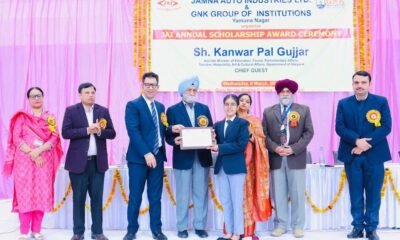


GNK hosts JAI scholarship distribution function
-




Administrative Council approves J&K Startup Policy 2024-27
-




How to begin investing
-




The rising modest fashion sector of Kashmir
-

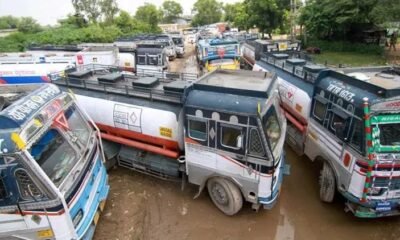


J&K Oil Tankers Union demands package, seeks tax rebate for transport sector in Budget 2024
Economy
SKUAST-K to hold mega Science Summit on Aug 23-24
Published
3 months agoon
August 21, 2024By
BK Editor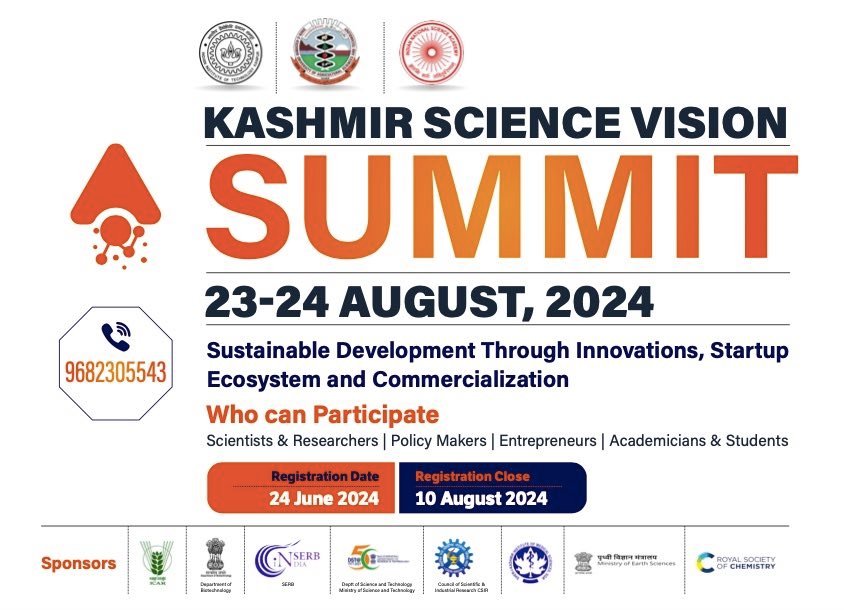

Srinagar, Aug 21: Sher-e-Kashmir University of Agricultural Sciences and Technology of Kashmir is hosting a mega first-of-its-kind science summit ‘Kashmir Science Vision-2024’ on August 23-24 at Shalimar campus. The event is expected to bring together leading scientists, researchers, policymakers, entrepreneurs and scholars to discuss and develop science and technology policy for the sustainable future of Jammu and Kashmir with a focus on helping the UT to emerge as a model for Viksit Bharat@2047.
The Kashmir Science Vision Summit will feature a dynamic range of keynote lectures, panel discussions and brainstorming sessions.
These discussions will focus on key areas of regional development like Scientific Innovations & Entrepreneurial Opportunities for exploring how technology can be harnessed to drive socio-economic growth and create new business opportunities, Biomedical & New-Age Sciences for advancing healthcare through innovative medical sciences and improving health outcomes for the region’s residents. Food Security & Sustainability for promoting sustainable agricultural practices to ensure long-term food security and environmental health, Biodiversity Conservation & Disaster Management for developing strategies to protect the region’s unique ecosystems and mitigate the impact of natural disasters will also feature in the two-day summit.
The summit aims to foster collaboration among diverse stakeholders to ensure that scientific advancements translate into meaningful benefits for Jammu and Kashmir.
Vice Chancellor SKUAST-K Prof Nazir Ahmad Ganai said the summit will serve as a catalyst for the region’s sustainable development and strategic growth. “It will be remembered as the spark that ignited science and technology-led future-ready Jammu & Kashmir,” he added.
Pertinent to mention, SKUAST-K is a premier institution dedicated to advancing agricultural sciences and technology. With a commitment to innovation and excellence, the university plays a pivotal role in fostering sustainable development and technological progress in the region.
Trade
Lenskart enters Kashmir market, opens shop at Regal Chowk
Published
10 months agoon
January 27, 2024By
BK Editor

Srinagar: Lenskart, India’s leading eyewear brand, has forayed into the Kashmir valley with the opening of its first outlet at Regal Chowk in Srinagar city. This expansion marks a significant milestone for Lenskart as it continues its mission to provide vision correction solutions to every individual across the country and beyond.


With seven successful stores already established in J&K UT’s Jammu city and plans underway for another outlet in Sanat Nagar, Srinagar, Lenskart aims to extend its presence to every nook and corner of Srinagar city.
“We have plans to expand our reach into other districts of Kashmir soon, ensuring accessibility to quality eyewear products and services for all residents,” said Dr Mohammad Mutaher Zerger, who heads Lenskart’s Portfolio and Franchisee Business Divisions.
Dr Mutaher is a seasoned professional with extensive experience in franchise management. Having previously served at McDonald’s, the new head of franchise at Lenskart brings valuable expertise in expansion strategies and operational excellence. “We are dedicated to providing state-of-the-art sophistication in eyewear technology, coupled with unparalleled customer service,” he added.
Lenskart’s commitment to accessibility and affordability is reflected in its offerings, including the innovative Buy One Get One (BOGO) facility available at all Lenskart outlets and online. Additionally, the brand provides complimentary eye testing facilities, ensuring that customers receive comprehensive care tailored to their needs.


Lenskart Founder, Shark Piyush Bansal’s Vision is to give correction-less vision to the entire India.
In line with its dedication to innovation and excellence, Lenskart recently inaugurated a cutting-edge robotic factory in Bhiwandi, where lens production and fittings are carried out with precision and efficiency. This advanced facility underscores Lenskart’s commitment to leveraging technology to deliver superior-quality products to its customers.


With a network of 1800 stores across India and a growing presence in international markets such as Singapore, Saudi Arabia, Thailand, and the UAE, Lenskart is poised for further expansion into other countries in the Middle East and Asia-Pacific regions.
Lenskart’s entry into Kashmir signifies not only its commitment to providing vision correction solutions but also its dedication to empowering individuals with the gift of clear vision, enabling them to lead more fulfilling lives.
Ecology
Economic and Environmental Implications of Sand Mining in Kashmir Division
Published
10 months agoon
January 15, 2024By
BK Editor

Uzma Hameed
Dhaar Mehak M.
Sand mining is the process of extracting sand from in and around the rivers, streams, lakes etc. Sand is also mined from beaches and inland dunes and dredges from ocean beds and river beds. In modern times sand is considered to be an essential raw material for construction purposes. As such, individual and private companies are increasingly demanding sand for construction purposes and this has placed immense pressure on sand resources. As a practice it is becoming an environmental issue as the demand for sand has been persistently witnessing an increase in industry and construction sectors of the economy especially in the developing pockets of the world. In developing nations, including India the annual demand for sand has been witnessing a perpetual rise of 07%. This has led to both an increase in the demand and price of sand in the open market. At the same time, people have been witnessing a profitable venture out of mining sand both legally and illegally leading to a number of issues and concerns.
Mining has been identified as the spine of the construction and infrastructure-centric economic growth and development process of the developing world, India being no exception to the same. Given the geographic extent of the country, the sand resources in the country have been plenty. However, like any other natural resource, the quantum of sand in India is limited. The usage however has been in practice right from the pre-historic times, the demand and usage being all time high in the contemporary times. The first recorded history of mining in India dates back to 1774 when the English company was granted permission by the East India Company for mining coal in the Raniganj coal fields.
After the colonial independence of the country, the growth of mining under the aegis of successive five-year planning processes has been quite speedy. Mining is among the significant economic activities of the country. The Gross Domestic Product (GDP) contribution of mining in India ranges between 2.2% and 2.5%. Given the historicity associated with mining in the country, its extraction and utilization processes have undergone a major shift towards modernization. The economic reforms of the 1991 and 1993 National Mining Policy further especially contributed towards the growth of the mining sector. The Indian mining industry in contemporary times provides job opportunities to around 7 lakh individuals. Given the diversity of the mining activities across the country, each state specializes in a related activity that it possesses a comparative advantage in especially in light of the reserves.
Given the geographic nature and extent of the region of Jammu and Kashmir, sand deposits in the region have been a common sight. At the same time, given the cold climate of the region, the need for secure housing has always been prioritized by the populace and governance of Jammu and Kashmir. With the evolution of construction processes and techniques, the shift from traditional wooden houses towards modern concrete houses has been widely witnessed. One of the main raw materials used for the construction of such houses has been identified as sand.
There are approximately 261 mineral blocks across the districts of Kashmir amongst whom the majority are situated along the bank of the river Jhelum. The mineral blocks in Kashmir contain sand deposits and various other minerals. One of the mining hotspots of the Kashmir division is the town of Bijbehara, locally known as Vejibror. While Bijbihara is also known as the town of Chinars, it has historically been a significant contributor towards the local economy. The town is located on National Highway 44 along the extended banks of the Jhelum River. It is also known as “Town of Chinars”. It is situated about 45 km from the capital of the Union Territory of Jammu and Kashmir, Srinagar. Within the Bijbehara town, the area of Gadhanji-Pora is particularly the committed hotspot of mining activities. It is situated approximately half a kilometre away from the Sub-District headquarters of Bijbehara.
According to the stakeholders, the most prolific user of sand is the construction industry. Individuals are increasingly demanding sand for domestic and commercial construction purposes. While there has been an increase in both the demand and prices of the resource, it has placed immense pressure on the local sand resources and deposits. Locally sand is being used in almost every construction-related activity from cement and concrete to plastering, roofing, grouting, painting etc. It is also commonly used in constructions like mortar, concrete, and cement strength, mass and stability.
Because of its smooth texture, better bonding qualities, and low impurity concentration, river sand is the most often utilised in Kashmir due to its quality, quantity and availability. Sand is the key component of concertation. Sand mining is rampant at many places along the Jhelum River, especially in the Bijbehara.
Given the extensive mining in the region, at certain points, the miners have breached the banks of rivers. The miners often drive their heavy vehicles straight into the water causing huge damages to the bunds along the river. These miners have lately also been using other heavy machinery like machine excavators and bulldozers in attempts to extract more sand in less time. By removing more sand than the rivers can naturally replace with the sediments it carries downstream, sand mining activities carve a deeper and narrower bed. It further goes on to lower the water levels in the river below the usual, speeds up the flow and erodes the banks. The biodiversity within and along the river is damaged. The fishes and other aquatic species that closely rely on the local bio-diversity are increasingly coming under threat.
Abdul Rehman, a local resident and fisherman, who has been fishing for the past 40 years describes his deteriorating experience, “Earlier if I covered an area of 3 km in the river, I would catch 6-8 kilograms of fish. Now, covering the same distance, I barely manage to catch 250 grams”. People from the Pazalpora area of Bijbehara, where the banks have been breached at multiple places, lament that they have been left all the more vulnerable to reoccurring floods because of unthoughtful activities like these.
The sand miners in and around the Bijbehara area of Anantnag district have been vandalizing the Jhelum River illegally. The damage is being increased manifold by the increasing use of heavy machinery for speedy mining of sand. After the devastating floods of 2014, the state government has been spending a significant amount of state money on the restoration, repair and upgrading of the banks of the river Jhelum. The so called and rightly called, ‘sand mafia’ across the valley in general and Bijbehara area in particular is breaching the sensitive river banks for the monetary interest of a few greedy people.
As such, as a collective voice basing our understanding on the facts mentioned above, it falls upon both people and the authorities to look deeper into the issue. As a matter of sustainability, now is the high time that the matter is dealt with an iron fist.
The authors are affiliated with the Department of Economics, Islamic University of Science and Technology and can be reached at dhaarmehak@gmail.com


SKUAST-K to hold mega Science Summit on Aug 23-24


Haryana Biodiversity Board commemorates International Biodiversity Day at GNK Group Of Institutions


Kya kuchh tha jiske kehne ko: A tribute to father


GNK hosts JAI scholarship distribution function


Administrative Council approves J&K Startup Policy 2024-27


How to begin investing


The rising modest fashion sector of Kashmir


J&K Oil Tankers Union demands package, seeks tax rebate for transport sector in Budget 2024


Lenskart enters Kashmir market, opens shop at Regal Chowk


Economic and Environmental Implications of Sand Mining in Kashmir Division
Trending
-

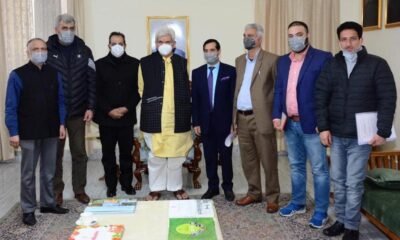

 Industry4 years ago
Industry4 years agoFCIK hails LG Sinha for creating entrepreneur-friendly industrial ecosystem
-

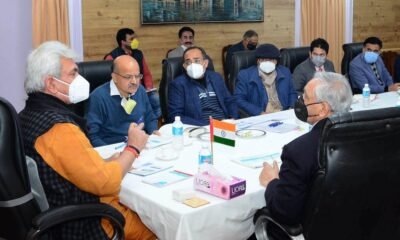

 Energy4 years ago
Energy4 years agoLt Governor discusses J&K power scenario with experts
-



 Economy2 years ago
Economy2 years agoGlobal eCommerce boom and local traders of Kashmir
-

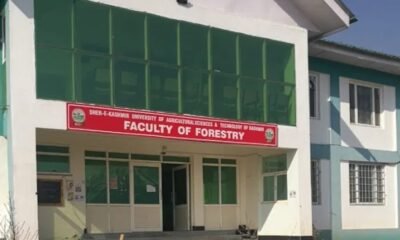

 Infra4 years ago
Infra4 years agoSKUAST-K bags EU project for urban green infrastructure
-

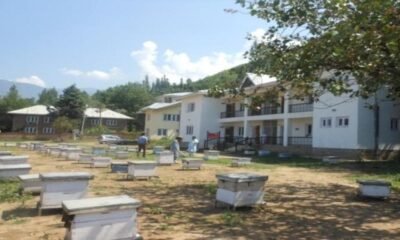

 AgriBiz4 years ago
AgriBiz4 years agoSKUAST-K to set up 3 honey testing labs in Kashmir
-

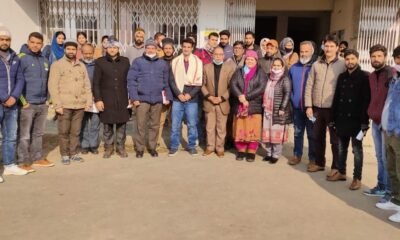

 Careers4 years ago
Careers4 years agoSKUAST-K holds career counselling at Wadura campus
-

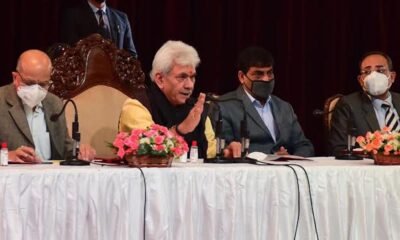

 Economy4 years ago
Economy4 years agoLt Governor announces new industrial policy for J&K
-



 Industry4 years ago
Industry4 years agoImran Murtaza takes oath as president Industrial Association Khunmoh

